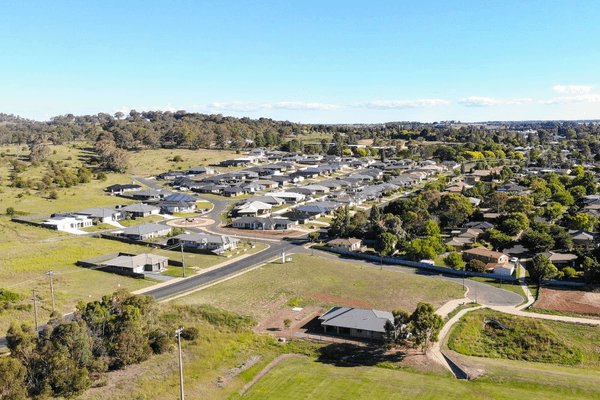
Share
Regional Australia continues attracting city dwellers with 26% more relocating to regional areas. Explore migration trends, top destinations & lifestyle benefits driving the tree change movement.
While city residents queue for overpriced coffee and sit in traffic jams, their former neighbours are enjoying beachside walks on the Sunshine Coast or exploring vineyard trails in regional Victoria. This isn’t just wishful thinking – it’s the reality for a growing number of Australians making the move to regional areas.
The latest data reveals a compelling story of sustained population movement away from capital cities. According to the June Quarter Regional Movers Index, 26 per cent more people are relocating from capital cities to regional areas than making the reverse journey, highlighting a fundamental shift in how Australians view lifestyle and location choices.
This ongoing regional migration Australia trend represents more than just a temporary pandemic response. The movement reflects changing priorities around work-life balance, housing affordability, and community connection that continue to draw city dwellers toward regional living opportunities across the nation.
The numbers tell the story
The latest Regional Movers Index data for June 2025 paints a picture of robust and sustained regional Australia population growth. The Sunshine Coast has reclaimed its position as the country’s most popular regional destination for net migration, overtaking Greater Geelong which had briefly held the top spot during the March quarter.
Record-breaking growth in regional hotspots
Several regional centres are experiencing extraordinary expansion that defies traditional population patterns:
- Albury, NSW: 16-fold increase in net migration from capital cities
- East Pilbara, WA: 311% annual increase in migration
- Hinchinbrook, QLD: Significant growth in regional migration
- Greater Shepparton, VIC: Strong performance in attracting city dwellers
Queensland has strengthened its position as a leading destination for internal migration, boosting its share of net movement from capital cities to regional areas from 19 per cent in 2023-2024 to 31 per cent in 2024-25. This places Queensland second only to New South Wales, which accounts for 34 per cent of regional migration trends. Tasmania has also reversed previous outflows, recording a 4 per cent net inflow to its regional areas.
The data shows that while overall movement across Australia declined by 15.2 per cent, including capital-to-capital relocations, specific regional areas continue to thrive as migration hotspots, demonstrating the selective nature of this population shift.
Regional hotspots driving the movement
Infrastructure development plays a crucial role in supporting regional Australia migration patterns. Bunbury in Western Australia has retained its position as one of the nation’s fastest-growing hotspots for capital city movers, with its appeal enhanced by major projects such as the completion of the Wilman Wadandi Highway, which has significantly reduced travel times between Perth and the region.
Greater Geelong’s strong performance has been underpinned by substantial government and corporate investment, including the upcoming Geelong Convention Centre scheduled for completion in 2026, and the Barwon Women and Children’s Hospital renovation and expansion expected to finish in 2026-2027.
The emergence of new regional hotspots demonstrates that the tree change Australia movement is expanding beyond traditional commuter belt areas. Places like Gympie in Queensland, Richmond Valley and Wingecarribee in New South Wales, and East Gippsland in Victoria have made their debut as hotspots, showing that people are willing to relocate further from major cities.
Albany in Western Australia, located almost five hours’ drive from Perth, recorded the third-highest growth in net internal migration, offering an idyllic lifestyle alongside reliable healthcare, education services, and strong employment opportunities across agriculture, aquaculture, renewable energy, and tourism sectors.
What makes regional living irresistible
The sustained appeal of moving to regional Australia stems from multiple compelling factors that address modern lifestyle priorities:
Housing affordability advantage
Regional communities offer significantly more affordable property options compared to metropolitan areas. While homes in Sydney and Melbourne command premium prices, regional towns like Tamworth and Greater Shepparton provide competitive housing markets alongside reasonable income opportunities.
Lifestyle benefits that matter
Regional Australia benefits extend well beyond housing costs. These areas offer reduced commuting times, closer-knit community connections, and immediate access to natural environments. Many regional areas provide the same facilities found in major cities – healthcare, cinemas, sporting venues, restaurants, and shopping centres – while maintaining a more relaxed pace of life.
Career opportunities with less competition
Employment prospects in regional areas often present reduced competition compared to metropolitan markets. Many industries experience skills shortages that create openings for professionals across various sectors. The widespread adoption of work-from-home arrangements enables many Australians to maintain city-based employment while enjoying regional Australia living benefits.
Regional Australia Institute CEO Liz Ritchie emphasised this transformation, stating that “Regional Australia is no longer a second choice – it’s the smart choice. From career opportunities to community connection, the regions are delivering.”
Economic factors also support regional migration, with the Australian Government committing $7 million to three new projects in Albury-Wodonga, including the Oddies Creek Splash Park, Wodonga Creek precinct, and the Advanced Manufacturing Centre of Excellence, demonstrating ongoing investment in regional infrastructure and opportunities.
The long-term trend beyond COVID
Movement to regional Australia represents a long-term demographic trend that predates the COVID-19 pandemic by nearly a decade. Since 2007, in every year except one, more people have moved out of Australia’s state and territory capital cities than have moved from regional areas to capitals, indicating this shift reflects deeper societal changes rather than temporary circumstances.
The pandemic accelerated existing regional migration Australia patterns rather than creating entirely new trends. Capital-to-regional relocations currently remain 8 per cent higher than pre-COVID averages, with the Regional Movers Index net migration measure sitting 51 per cent above pre-pandemic levels.
This sustained growth suggests permanent changes in Australian lifestyle preferences. The combination of technological advances enabling remote work, changing attitudes toward work-life balance, and growing awareness of regional Australia benefits has created conditions that support continued population redistribution away from major cities.
Research by the Australian Housing and Urban Research Institute reveals that this trend affects housing markets both in destination regions and across broader areas, creating ripple effects that extend well beyond individual communities experiencing direct population growth.
Key challenges ahead
The success of regional migration brings important planning requirements. Housing pressure in popular regional destinations is creating affordability concerns for existing residents, with increased demand driving up both rental and purchase prices in many areas.
Regional Australia Institute research recommends appointing a Regional Housing Commissioner and allocating 40 per cent of the National Housing Accord’s 1.2 million planned homes to regional areas. Infrastructure development must keep pace with population growth to ensure communities can continue welcoming new residents while maintaining service quality.
Looking ahead
The continuing attraction of regional Australia for city dwellers represents a fundamental reassessment of lifestyle priorities among Australians. With 26 per cent more people choosing regional relocation over the reverse movement, the data confirms that regional living delivers on its promises.
The emergence of new hotspots beyond traditional areas, combined with sustained growth in established regional centres, demonstrates the breadth of this demographic shift. From the Sunshine Coast’s scenic appeal to Albury’s economic opportunities and the East Pilbara’s resource-driven expansion, regional Australia offers diverse options for those seeking alternatives to capital city living.
As infrastructure investment continues and work arrangements remain flexible, regional Australia appears well-positioned to maintain its appeal. The challenge now lies in managing this growth sustainably while preserving the qualities that make regional living so attractive.
For those weighing up their own tree change, the evidence suggests regional Australia represents more than just an alternative to city living – it’s increasingly becoming the preferred choice for Australians seeking a better quality of life. With expert insights confirming this isn’t just a temporary trend, the regional migration story looks set to continue shaping Australia’s demographic future.
Further questions
What are the most popular regional destinations for city dwellers in Australia?
Why are people moving from cities to regional areas in Australia?
How has COVID-19 affected regional migration trends in Australia?
What challenges does increased regional migration create for local communities?
Which Australian states are seeing the biggest increases in regional migration?
This is general information only and is subject to change at any given time. Your complete financial situation will need to be assessed before acceptance of any proposal or product.





